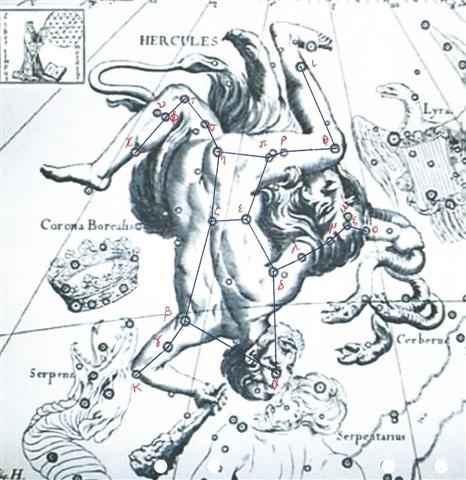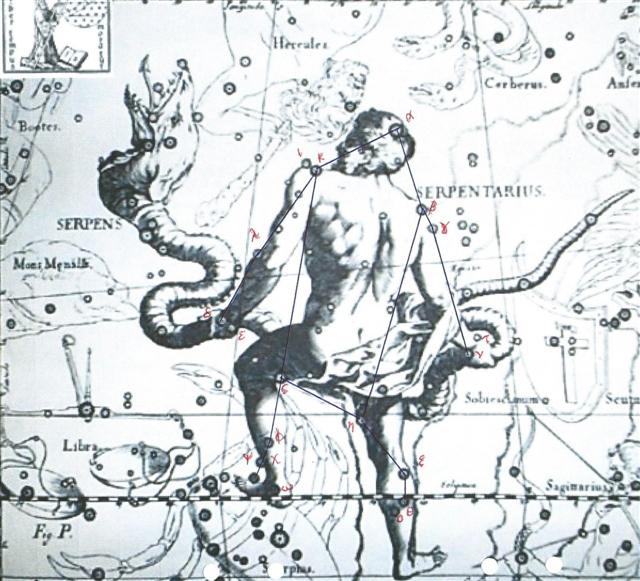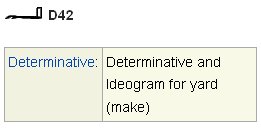Earlier I have assigned the nakshatra date December 13 at Cb3-8:
449 + 183 - 365 = RA 267 = December 13 (347). And then 347 + 181 - 365 = 163 (June 12). According to my current perception this position of Heka should be 33 days after November 10 (314) - when the star was close to the Full Moon:
From nakshatra Heka in December 13 (347) to heliacal Heka in June 12 (163) there were 365 + 163 - 347 = 181 days. Number 347 (December 13) could allude to 34 weeks = 238 nights, and number 238 was the position of heliacal Heka counted from the beginning of side b. 630 - 392 = 238. On Easter Island the month December is in summer and the month June in winter. But it is not easy to determine whether the text has been designed to show the heliacal or the nakshatra stars. However, the glyphs in line Cb10 can be interpreted to show a low sky roof and therefore describe the situation in June (on Easter Island). Therefore we can guess the stars should be combined with the glyphs at their heliacal positions. But then the glyphs around December 13 in line Cb3 ought to be combined not with Heka but rather the opposite. The unlucky Heka constellation was perhaps a sign of death (†) in contrast to the stars around December 13, which then could be connected with birth (*). The glyph type hanau (in Cb3-7 and Cb3-9) probably means 'birth' which is in harmony with my idea of no Heka at December 13. Instead Heka at that time would have been harmlessly close to the Full Moon in the night and without any influence on the Sun King.
I have painted the stars names blue to indicate their heliacal character. In December 13 the Sun was where the upside down Hercules was joined (face-to-face) to the Serpent Carrier. The star ι is at the left shin-bone of Hercules:
Nan Hae (The Southern Sea) is ξ Serpentis, a star in the Serpens Cauda asterism close to the right thigh of the Serpent Carrier. Possibly the Serpent Carrier took over (like a tanist) as King after half a year (a 'yeard') counted from June 21:
| |||||||||||||||||||||||||||||||||||||||||||||||||||||||||||||||||||||||||||||||||||||||||||||||||||||||||||||








